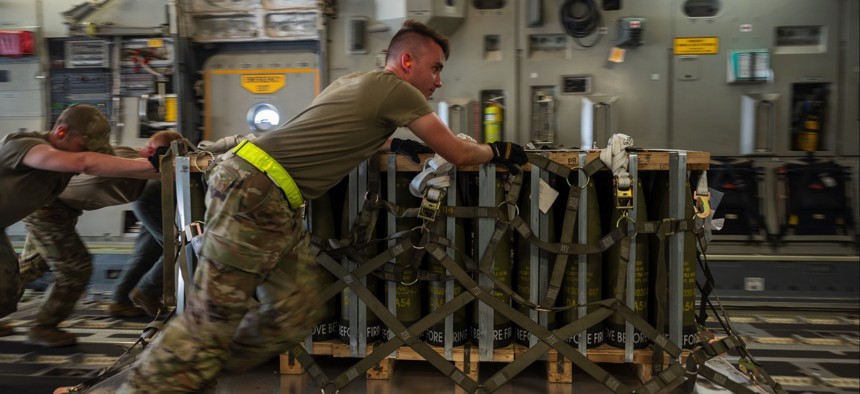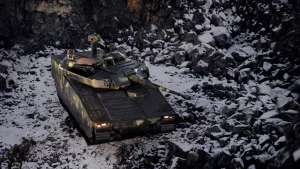The United States military has significantly increased the speed of delivering guns and ammunition to eager Ukrainian soldiers.

Airmen load pallets of ammunition onto a C-17 Globemaster III bound for Ukraine during a security assistance mission. Airman 1st Class Cydney Lee, U.S. Air Force
The Europe-based unit responsible for shipping weapons to Ukraine has achieved a 30 percent faster delivery rate since the start of Russia’s full-scale invasion last year. According to a spokesperson from the U.S. Army’s 21st Theater Sustainment Command, the improvement is a result of enhanced efficiency in transportation, gained through experience, after-action reports, and improved operational forecasting.
This acceleration coincides with the U.S. Army’s relearning of Cold War-era techniques for swiftly transporting troops and equipment across the 3,000 nautical miles between the U.S. and its European allies. The U.S. began reviving these skills in 2019 during the DEFENDER-Europe exercise, which mirrors the REFORGER wargames conducted in the past to prepare NATO forces for countering a Soviet invasion of Western Germany.
Initially, the U.S. support for Ukraine was relatively modest. In December 2021, the U.S. authorized $200 million in lethal aid amid concerns of a potential Russian invasion. The Doctrine Education Advisory Group (DEAG), a small unit responsible for military education in Ukraine, was tasked with inventorying the equipment upon its arrival. Despite their primary focus on education, the DEAG dedicated themselves to the mission.
Since then, the flow of weapons to Ukraine has significantly increased. As of May 21, the U.S. has shipped or pledged to ship $38 billion worth of equipment and weapons, much of which is sourced from U.S. stockpiles. Notable items include two million 155mm artillery shells weighing 95 pounds each, 2,000 Humvee trucks weighing around three-and-a-half tons, and a promise of 749 infantry fighting vehicles and armored personnel carriers, with 31 Abrams tanks set to arrive in the fall. These arms replenish Ukraine’s munitions supply and enhance their ability to strike deep into Russian-occupied areas.
Additionally, the U.S. military has bolstered its presence in Europe by deploying an additional 20,000 service members, bringing the total to 100,000.
While ramping up its efforts to counter a resurgent Russia, the Army has encountered challenges. In early 2022, Army logisticians worked tirelessly to equip an entire Army brigade combat team arriving from the United States, accomplishing the task twice as fast as anticipated and earning praise from the Army chief of staff. However, a Defense Department Inspector General investigation revealed that approximately 10 percent of equipment issued from pre-positioned stockpiles did not meet the required standards. One issue identified was the lack of exercise tracks for vehicle testing, as these tracks had never been built according to maintenance instructions.
Mark F. Cancian, a senior advisor at the Center for Strategic and International Studies, remarked in March that the rapid retrieval of equipment from European storage became an unexpected necessity after the end of the Cold War.





